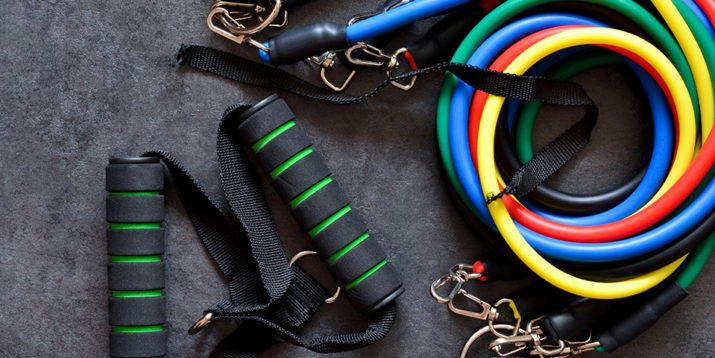How to Get More Out of Your Resistance Band Exercises

Hopefully, you already know that resistance bands are a powerful tool for any exercise program.
They’re light, portable, and effective strength-builders.
But what if there was a way you could squeeze even more benefits out of your resistance band exercises? The good news is that you can — with a resistance band door anchor.
Here’s how…
Why You Need a Resistance Band Door Anchor
“[Resistance band door anchors] open up the possibilities of exercises you can perform at home with your bands,” says K. Aleisha Fetters, C.S.C.S., online strength coach and co-author of “Give Yourself MORE.”
Many resistance band exercises require you to loop the band (or attach one end of it) to a stationary anchor point, like a secure pole or post.
But if want to do exercises like the face pull, high-to-low wood chop, lat pulldown, and triceps extension, you need to find an anchor point close to the ceiling.
That’s where resistance band door anchors come in handy.
What to Look for in a Resistance Band Door Anchor
There are plenty of resistance band door anchors on the market. Just be sure to pick one that allows you to perform a wide variety of exercises — safely.
“When shopping for anchors, look for really durable models with a large, but still cushiony stopper that won’t accidentally slip through your door jam or scuff up your walls,” Fetters says.
The BODi Control Track* from Super Trainer Autumn Calabrese’s 9 Week Control Freak, for example, is a complete resistance band training system that easily and securely attaches to a sturdy door or can be mounted on a wall.
“The Control Track is height adjustable, allowing you to push and pull from different angles so you can target different muscle groups easily and effectively,” says Cody Braun, CPT. Pair with the B-LINES Resistance Band Kit.
How to Use a Resistance Band Door Anchor
1. Close the mount in a door that can be secured
Once you’ve got your resistance band door anchor, shut it in a solid, secure door.
“If a door doesn’t fully latch closed (and stay that way) or you can’t lock it, keep looking for other door options around the house,” Fetters says.
2. Do not pull in the direction the door opens
When you shut the anchor in the door, set it up so that you’ll pull the band in the opposite direction from which the door opens. “That way, you can’t accidentally pull the door open and get smacked with the band,” Fetters says.
3. Monitor the condition of your bands
Similarly, be sure to check your resistance bands for fraying or cracking before using them with your door anchor.
Once set up, you can use your anchor for any number of resistance band exercises, including, but definitely not limited to:
- Chest press
- Row
- Shoulder press
- Biceps curl
- Triceps extension
- Deadlifts
Pro tip: A resistance band anchor may be a good solution if deadlifts usually give you back pain.
“The anchored resistance band option allows you to pull from a position that’s less compromising for the back,” Braun explains.
*For safety, only use the 9 Week Control Freak Control Track as instructed in the demonstration video, and follow the installation guideline provided with the Control Track.
